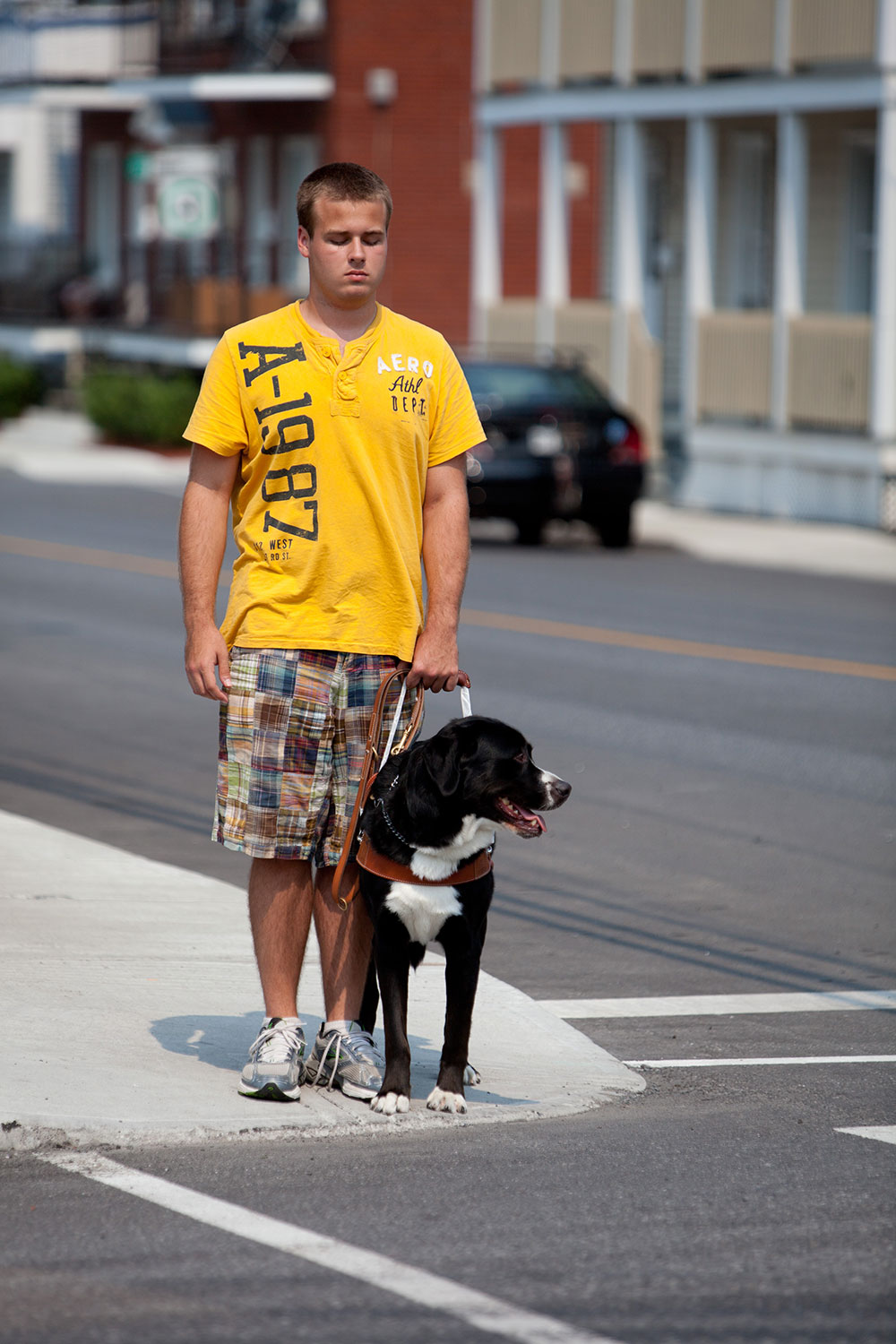What We Do

We Provide
Mira USA provides guide dogs to children between the ages of 11 and 17, and thus offers young children a major type of support that enhances their life at a time when self-assurance, mobility and independence are particularly important.
Activities of young people are rarely restricted to smooth surfaces and uncrowded places. This impacts on how much a blind child is excluded from interactions with non-disabled peers. This only adds to the isolation and reinforced sense of being “different.”

Relationship
The relationship between the guide dog and the student is interdependent and important in the development of the child. For most blind children, having a dog is the first time that they are actually the caregiver rather than the person dependent on someone else. Responsibility for the daily care of their dog is taught during the month of training. Students are responsible for feeding, walking, grooming, managing their dog as well as for taking care of the elimination needs of their dog and clean up. In order to develop and maintain the bond that is necessary between the child and the guide dog, the child is the only one who takes care of the dog. This allows the blind child to develop personal discipline, self-confidence, empathy and compassion as well as age-appropriate autonomy. These are critical developmental milestones that follow any child into successful and competent adulthood.

Witness a new beginning
While quality of life is undisputedly enhanced by all of these factors, a big difference lies in the reality that a cane cannot provide protection, unconditional love, companionship or comfort during bad days and difficult times. As childhood and adolescence is filled with traditional and non-traditional trials, a guide dogs is also a true friend who can always be counted upon for support.
Communities in which our youngsters live, the schools that they attend, the families of which these youngsters are a part, all find that these dogs provide a bridge to the sighted world that these young people did not have before.
Life is a difficult journey for blind children, one that those of us with sight cannot truly imagine, but it is a journey that is enhanced with the companionship and guardianship of a Mira guide dog. The guide dog provides an elevated quality of life for the blind child and for that child’s contributions to the world which we all share.
Having guide dogs is a bridge to the sighted world for a child, enabling the child to participate in that world more fully, to develop potential and thus increase the benefits we all have as a result.
To see a blind child walk with a guide dog for the first time is to truly witness a new beginning.

One Dog One Child
And BeyondWhen a blind child is paired with a guide dog from Mira USA, it is definitely a new chance for an expanded, independent life for that child. However, it is more than that. We have found that it is a benefit to many. It is, simply put, the same as when one throws a pebble into a body of water. The concentric circles expand far beyond the immediate impact of the pebble when it first reaches the water.
For our young people, the dog is an immediate bridge to the sighted community for the child, but the life changing effect of the guide dog reaches beyond one youngster. It reaches to the extended family, to the school community and the neighborhood and beyond. It enables others to feel comfortable around the blind student and lessens the fear and prejudice people have toward those who have physical limitations. The dog in many ways is our “concentric circle” and expands its influence far beyond one child.
It is important to recognize that the impact of this pairing extends well beyond just the child and the guide dog.
It impacts the family, the school, the community as well as all those the child comes into contact with throughout life.

